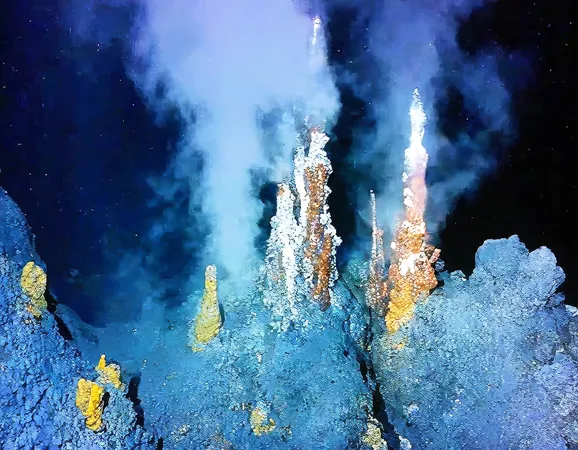
Revolutionary Discovery: How Ocean Microbes Tackle Methane Emissions!
2025-08-26
Author: Sarah
Tiny Guardians of the Ocean: Microbes in Action
Did you know that our oceans are silently battling greenhouse gases? Thanks to a groundbreaking study, we now understand how microscopic partnerships on the seafloor are curbing methane, one of the most potent climate-changing gases, from entering our atmosphere!
The Unsung Heroes Beneath the Waves
Recent research reveals that methane produced in oceanic mud rarely escapes into the air, thanks to unique microorganisms that thrive without oxygen. This critical process, called anaerobic oxidation of methane, has long been known, but its inner workings have just been clarified by scientists led by Hang Yu from Peking University.
The Dynamic Duo of Microbial Life
At the heart of this natural filtration system are methanotrophic archaea and sulfate-reducing bacteria. These microbial partners work hand-in-hand, with one group initiating the breakdown of methane and the other finalizing the process using sulfate—an abundant salt in seawater.
A High-Tech Investigation into Microbial Exchanges
To decode how these microbes cooperate, Yu's team meticulously studied samples from different methane seep locations, utilizing advanced lab techniques. By applying microelectrodes to intact microbial clusters, they tracked the transfer of electrons, revealing that these partners communicate effectively across minuscule distances.
Electrons in Motion: The Chemistry of Cooperation
Their experiments highlighted a fascinating phenomenon where electrons zip across tiny gaps, showcasing a robust method of charge transfer that underscores the efficiency of these microbial partnerships. The discovery suggests that proteins, particularly multiheme cytochrome c, play a crucial role in this electron transport, enabling quick and effective methane processing.
Implications for Future Models and Technologies
This remarkable work not only bridges an important gap in our understanding of methane cycling but also paves the way for more accurate environmental models. By incorporating the newly discovered mechanisms into methane cycling predictions, scientists can better grasp how these natural processes operate.
Harnessing Nature’s Power for Sustainable Solutions
As we grapple with escalating methane emissions, this research offers insights into harnessing these microbial processes for environmental solutions—such as bioreactors designed to manage methane-rich waste. While adapting these findings to real-world applications will require careful experimentation, the potential for sustainable strategies is exciting!
A Call to Action for Environmental Monitoring
Understanding the mechanics of how these microorganisms effectively manage methane could set the stage for future monitoring and environmental designs. It's a reminder that nature frequently provides solutions to the challenges we face.
This pivotal study is published in Science Advances, heralding a new era in microbial research and climate science. Stay tuned for more groundbreaking discoveries!




 Brasil (PT)
Brasil (PT)
 Canada (EN)
Canada (EN)
 Chile (ES)
Chile (ES)
 Česko (CS)
Česko (CS)
 대한민국 (KO)
대한민국 (KO)
 España (ES)
España (ES)
 France (FR)
France (FR)
 Hong Kong (EN)
Hong Kong (EN)
 Italia (IT)
Italia (IT)
 日本 (JA)
日本 (JA)
 Magyarország (HU)
Magyarország (HU)
 Norge (NO)
Norge (NO)
 Polska (PL)
Polska (PL)
 Schweiz (DE)
Schweiz (DE)
 Singapore (EN)
Singapore (EN)
 Sverige (SV)
Sverige (SV)
 Suomi (FI)
Suomi (FI)
 Türkiye (TR)
Türkiye (TR)
 الإمارات العربية المتحدة (AR)
الإمارات العربية المتحدة (AR)